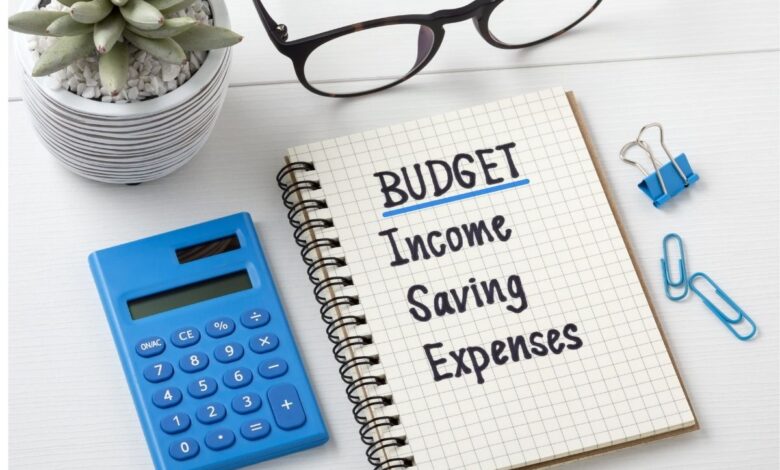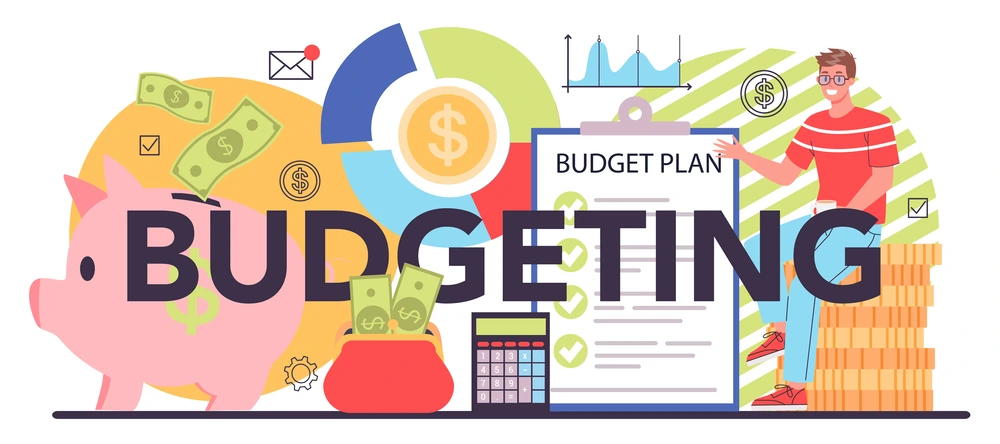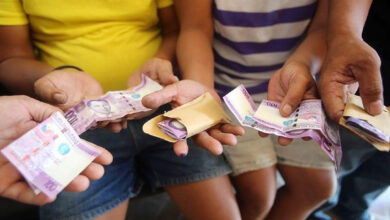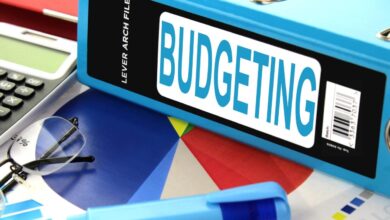The Ultimate Guide to Effortless Budgeting

In the vast landscape of personal finance, one skill stands paramount: budgeting. Many people mistakenly view budgeting as a restrictive, painful process, a financial diet that forces you to constantly say “no” to things you enjoy.
This common misconception often leads to procrastination and a revolving door of failed financial resolutions. However, budgeting is not about deprivation; it’s about empowerment and intentionality.
It serves as a vital financial roadmap, illuminating where your money is going and giving you the power to consciously direct your hard-earned income toward your most important life goals.
A well-crafted budget acts as the bridge between your current financial reality and your future aspirations, whether that’s saving for a down payment on a house, aggressively paying off debt, funding a dream vacation, or simply achieving peace of mind.
Without a budget, money tends to simply “vanish” into a black hole of impulse purchases and forgotten subscriptions, leaving you perpetually wondering where your paycheck went.
By dedicating time to understanding and mastering the art of budgeting, you are essentially taking control of your financial destiny, transforming vague hopes into achievable milestones and laying a solid foundation for long-term wealth creation.
I. Understanding the Psychology of Money

Before diving into numbers, it’s crucial to address the psychology behind your spending habits.
Your financial behavior is deeply intertwined with your emotions, upbringing, and societal influences.
Recognizing these underlying drivers is the first and most critical step toward sustainable budgeting.
Many people are emotional spenders, using shopping as a form of therapy or a way to cope with stress or sadness.
Others are heavily influenced by “keeping up with the Joneses,” feeling pressure to match the visible spending habits of friends, colleagues, or social media influencers.
Furthermore, your childhood experiences with money, such a scarcity or abundance, can unconsciously shape your current financial decisions.
Are you a saver because your parents always stressed frugality, or are you a spender because you associate money with immediate pleasure?
Taking a moment for financial self-reflection allows you to identify your spending triggers and emotional vulnerabilities.
Once you understand the why behind your financial actions, you can develop coping mechanisms and strategies that address the root cause, making your budget a tool for psychological well-being rather than just a dry spreadsheet.
This deep personal insight transforms the budgeting process from a chore into a rewarding journey of self-discovery and discipline.
II. The Foundational Step: Tracking Your Expenses
The core of any successful budget is knowing exactly where your money goes. You cannot manage what you do not measure, and this step is often the most illuminating and sometimes the most painful part of the process.
A. The Importance of Data Collection
You must gather comprehensive data on all your financial transactions over a period of at least 30 days. This involves tracking every single penny spent, from major bills to a morning coffee.
B. Methods for Expense Tracking
There are several effective ways to meticulously log your spending, and the best method is the one you will actually stick with consistently.
- A. Digital Budgeting Apps: Utilize modern tools like YNAB (You Need A Budget), Mint, or Personal Capital that automatically link to your bank accounts and categorize transactions, offering unparalleled convenience.
- B. Spreadsheets (Google Sheets/Excel): For the analytically inclined, a simple spreadsheet allows for complete customization of categories and formulas, providing a clear, hands-on view of your data.
- C. Notebook or Ledger: A completely manual approach for those who prefer to keep things analog, writing down every transaction immediately after it occurs to maintain a high level of awareness.
- D. Bank and Credit Card Statements: Regularly download and review statements from all financial institutions to cross-check and capture any forgotten cash transactions or automatic payments.
C. Categorizing Your Spending
After collecting the data, you need to group expenses into meaningful categories to identify patterns and areas for reduction. Common categories include Housing (rent/mortgage, utilities), Transportation (car payment, gas, maintenance), Food (groceries, dining out), Debt Payments, Insurance, and Personal/Discretionary (entertainment, hobbies, subscriptions).
The level of detail should be sufficient to make informed decisions without becoming overly granular to the point of frustration.
III. Choosing Your Budgeting Philosophy

There is no one-size-fits-all budget, and finding a method that aligns with your personality and financial goals is key to long-term success.
A. The 50/30/20 Rule
This is a simple, popular method that divides your after-tax income into three main buckets, providing a flexible structure.
- A. 50% for Needs: Allocate half of your income to essential expenses—things you absolutely cannot live without. This includes housing, food, minimum debt payments, and transportation.
- B. 30% for Wants: Devote 30% of your income to discretionary spending—non-essential items that improve your quality of life. This covers dining out, hobbies, premium subscriptions, and travel.
- C. 20% for Savings and Debt Repayment: The remaining 20% must go toward financial goals, including savings (emergency fund, retirement) and any debt payments above the minimum required.
B. The Zero-Based Budgeting (ZBB)
Zero-based budgeting is the practice of giving every dollar a specific job until your income minus your expenses equals zero. This method demands precision and intentionality.
- A. Total Income Minus Total Expenses Equals Zero: You must assign a specific category and dollar amount to every dollar earned.
- B. The “Stuffing the Envelope” Concept: Historically, ZBB was done by putting cash into physical envelopes labeled for different expenses; today, digital tools emulate this for your bank account.
- C. Proactive Spending: This method is powerful because it requires you to make decisions about your money before you spend it, preventing “leakage” into forgotten or unnecessary purchases.
C. The Envelope System (Cash Budgeting)
This strictly cash-based method physically limits spending by assigning a fixed amount of cash to certain categories each month.
- A. Limit Discretionary Spending: This is particularly effective for categories like groceries, entertainment, and dining out, where overspending is common.
- B. When the Cash is Gone, Spending Stops: The physical restriction of cash prevents you from dipping into other funds, fostering immediate awareness of your limits.
D. Anti-Budgeting (Reverse Budgeting)
Ideal for individuals who find traditional budgeting too restrictive, the anti-budget focuses solely on hitting savings goalsfirst.
- A. Pay Yourself First: Immediately allocate a set amount of money to savings and investment accounts on payday.
- B. Spend What’s Left: After setting aside your savings, you are free to spend the remainder of your income without guilt or rigid tracking.
- C. Requires High Income or Strong Discipline: This only works if the amount you save first is substantial enough to cover your financial goals, and your remaining spending habits are generally reasonable.
IV. Mastering the Art of Cutting Costs
Once your budget framework is established, the next step is identifying and executing strategic cost reductions to free up more money for your savings and investment goals. This is about making smart trade-offs, not living miserably.
A. Taming Fixed Expenses
Fixed expenses are typically the largest budget items and are difficult to change quickly, but minor adjustments can yield significant long-term returns.
- A. Housing: Can you refinance your mortgage for a lower interest rate? If renting, is it feasible to move to a slightly less expensive area or get a roommate?
- B. Insurance: Shop around for better rates on auto, home, and life insurance annually. Even a small reduction can save hundreds of dollars a year.
- C. Subscriptions and Utilities: Audit all recurring monthly subscriptions (streaming services, gym memberships, apps) and cancel any that are not actively used. Contact utility companies to explore lower-rate plans or implement energy-saving habits.
B. Optimizing Variable Expenses
Variable expenses fluctuate monthly and are the easiest targets for immediate budget improvement, requiring only behavioral changes.
- A. Food Costs: Reduce the frequency of dining out, which is often a major budget drain. Plan meals, cook at home more often, and utilize grocery store sales and loyalty programs.
- B. Transportation: Carpool, use public transport, or negotiate a lower rate on your auto loan. For many, simply driving less aggressively can save on gas and maintenance.
- C. Entertainment: Instead of expensive nights out, explore free or low-cost alternatives like local parks, libraries, or hosting potlucks with friends.
C. The Power of Negotiation
Never underestimate your ability to negotiate lower prices for services you already use.
- A. Cable/Internet/Phone: Call your provider, mention competing offers, and ask for a retention deal or a lower plan. Many companies have unadvertised discounts they will offer to keep you as a customer.
- B. Credit Card Interest Rates: If you are carrying a balance, call your credit card company and ask for a lower Annual Percentage Rate (APR). They may grant a temporary or permanent reduction, especially if you have a good payment history.
- C. Medical Bills: Negotiate hospital or doctor bills, often leading to a reduction if you are willing to pay the balance in a lump sum.
V. Advanced Budgeting: Achieving Financial Milestones
Budgeting is a dynamic tool that should evolve as your life and goals change. It moves beyond just managing the present to actively building the future.
A. Implementing Sinking Funds
Sinking funds are essential for budgeting for large, irregular expenses that you know are coming but don’t occur monthly, preventing them from derailing your main budget.
- A. Define the Goal: Identify a future large expense, such as holiday gifts, annual insurance premiums, car maintenance, or an upcoming vacation.
- B. Calculate the Monthly Savings: Divide the total estimated cost by the number of months until the expense is due, and save that amount every month. For example, if you need $1200 for holiday gifts in 12 months, you save $100 monthly.
- C. Maintain Separate Digital Envelopes: Keep these funds separate in a high-yield savings account or a dedicated digital sub-account to prevent accidental spending.
B. Integrating Debt Payoff Strategies
Your budget should explicitly include a plan to attack high-interest debt aggressively, recognizing that debt payoff is one of the highest guaranteed returns on investment you can achieve.
- A. Debt Snowball Method: List all debts from the smallest balance to the largest. Focus all extra payments on the smallest debt while maintaining minimum payments on the rest. Once the smallest is paid off, roll the entire payment amount onto the next smallest, creating a “snowball” of accelerating payments.
- B. Debt Avalanche Method: List all debts by the highest interest rate to the lowest. Focus all extra payments on the debt with the highest interest rate first, saving you the most money in interest charges over time.
C. Budgeting for Irregular Income
For freelancers, gig workers, or those with highly variable monthly income, traditional budgeting is challenging, requiring a different approach.
- A. Base Budgeting on the Lowest Month: Create a core budget based on the lowest amount of income you can realistically expect in any given month.
- B. Buffer Account: Build a separate buffer account that holds enough money to cover one full month’s worth of expenses, ensuring you can always pay bills on time regardless of when client payments arrive.
- C. Extra Income Allocation: Establish a clear rule for how any income above the core budget minimum will be allocated (e.g., 50% to taxes, 30% to savings/investing, 20% to discretionary spending).
VI. Reviewing and Adjusting Your Budget
A budget is not a static document; it is a living, breathing financial tool that requires regular maintenance and calibration. Ignoring this step is the primary reason why most budgets fail after the first few months.
A. Schedule a Monthly Financial Date
Set aside a specific time, ideally once a month (perhaps on the first of the month), to review your financial data. This dedicated time should be treated like a serious business meeting with yourself or your partner.
B. Compare Actual vs. Budgeted Amounts
Critically compare your actual spending in each category against the amount you had budgeted. This highlights where your estimates were unrealistic and where your behavior needs correction.
C. Identify Budget Failures and Successes
Acknowledge where you succeeded, as positive reinforcement is essential for motivation. More importantly, analyze any failures without judgment, asking why you overspent (e.g., a sudden emergency, a flawed estimate, or emotional spending).
D. Adjust the Plan for the Next Month
Use the insights gained to modify the budget for the upcoming month. If you consistently overspend on groceries, increase that category’s allocation and find cuts elsewhere; if you find yourself with a surplus in transportation, redirect that money to investment.
The goal is continuous improvement and increased accuracy.
VII. Utilizing Technology for Efficiency
Modern technology has made budgeting easier and more accessible than ever, moving past the tedious manual calculations of the past.
A. Financial Aggregation Tools
These platforms provide a holistic view of your entire financial life—checking, savings, credit cards, investments, and debt—in one dashboard, making the monthly review much faster.
B. Automated Savings Transfers
Set up automatic transfers to move money to your savings and investment accounts immediately on payday, ensuring you save before you have a chance to spend it (Pay Yourself First).
C. Expense Tracking and Categorization
Utilize apps that automatically categorize transactions, minimizing the time you spend on data entry and giving you more time to focus on strategic decision-making.
D. Digital Envelope Systems
Apps that offer a “zero-based” approach, such as YNAB, allow you to create digital envelopes, moving money between them as needed and ensuring you never overdraw a specific category.
Conclusion
Mastering your personal budget is the most crucial step on the path to financial freedom. It removes anxiety by replacing uncertainty with a clear, actionable plan for your money. A good budget is a dynamic tool that evolves with your life, not a rigid constraint that causes distress.
By consciously controlling your income and expenses, you gain the power to align your spending with your core values and long-term goals. Commitment to regular review and adjustment is far more important than achieving perfect accuracy in the first month.
Embrace budgeting as an act of self-care and empowerment, leading to a profound reduction in financial stress and a major increase in wealth.
The effort you put into tracking and planning today guarantees a brighter, more secure financial tomorrow. Your budget is simply permission to spend money on things you love, provided you’ve saved for your future first.




